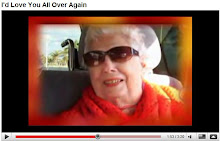The Overdosing of Our Elders
A recent article published in the Wall Street Journal entitled Prescription Abuse Seen In U.S. Nursing Homes seems to have taken a lot of people by surprise.
According to the report, it is estimated that 21% of nursing home patients who don’t have psychosis diagnosis are on antipsychotic drugs.

The article goes on to say “In recent years, Medicaid has spent more money on antipsychotic drugs for Americans than on any other class of pharmaceuticals — including antibiotics, AIDS drugs or medicine to treat high-blood pressure.”
In other words, we spend more money on keeping our elders docile.
Christie Teigland, director of informatics research for the New York Association of Homes and Services for the Aging, remarks “You walk into facilities where you see residents slumped over in their wheelchairs, their heads are hanging, and they’re out of it, and that is unacceptable.”
According to survey data obtained from CMS and posted on : http://www.memberofthefamily.net/qitrends, a registered nurse spends anywhere from 1/2 an hour to an hour per resident, with a total of 1.5 to 5 hours nursing care supervision per resident. A day has 24 hours - that lives a wide gap, doesn’t it?
“Revulsion against practices such as tying down and sedating disruptive elderly patients led to a landmark federal law in 1987, signed by President Reagan, that sets limits on how and when nursing homes can physically, or chemically restrain a patient. Since then, a rising population of elderly people suffering dementia has entered nursing facilities, many of which have overburdened staff.”
According to the article, nursing homes often find it difficult to balance the demands of caring for certain patients against the pressure to keep staff costs down. The economics of elderly care can work in favor of drugs, because federal insurance programs reimburse more readily for pills than for people.
Rusty W., a registered nurse, comments, “My time has been spent with Dementia/Alzheimer’s patients. . . now I’m involved with the hospice care. This is something that is happening nationwide yet little is done to prevent it. The excuses are shortness of staff and too many patients (yes, the work load is hard especially when you may have 30 on a shift by yourself).”
Sedatives: Manufacturer’s Warning for Elder People Sedatives will cause drowsiness - Avoid other sedatives, sleeping pills, and tranquilizers. They should NOT be taken while using them. Narcotics can increase the sedative’s effects, and can also decrease your breathing rate to the point of unconsciousness or coma. Do not take this drug with any other drugs that might slow the central system down, like another sedative. Only take this drug in small doses if over sixty and with CLOSE monitoring.
Improper dosage or use of sedatives can lead to another serious problem - accidental falls. The consequences of falls to our elder citizens are serious — only about 25 percent of hip fracture patients will make a full recovery; 40 percent will require nursing home admission; 50 percent will be dependent upon a cane or walker; and 20 percent will die within one year. And according to the NCIP, half of all elderly adults hospitalized for hip fracture cannot return home or live independently after the injury. According to the CDC More than one third of adults 65 and older fall each year in the United States (Hornbrook et al. 1994; Hausdorff et al. 2001).
Among older adults, falls are the leading cause of injury deaths. They are also the most common cause of nonfatal injuries and hospital admissions for trauma (CDC 2006). In 2004, 14,900 people 65 and older died from injuries related to unintentional falls; about 1.8 million people 65 and older were treated in emergency departments for nonfatal injuries from falls, and more than 433,000 of these patients were hospitalized (CDC 2006). The rates of fall-related deaths among older adults rose significantly over the past decade (Stevens 2006).
What Can You Do ?
It is hard to measure how many elder deaths in nursing homes are attributable to falls due to sedative overdosing. Elder deaths in nursing homes are rarely investigated, and this is because according to Catherine C. McNamee, a Social Science Analyst at the National Institute of Justice, in Attitudes Hinder Investigations;
“Researchers also identified a propensity for medical examiners and coroners
to exhibit ageism—a belief that focusing on nursing home deaths was “a waste of their time and resources…because of the poor health status of most nursing home residents… [who] would die anyway.”[8]
According to Elder Advocate attorney Maria C. Gallo in Central Florida, “A good psychiatric nurse is worth his weight in gold, he/she knows about medications and why they are needed or not needed. She will be able to identify side effects and interactions with other medications, foods, etc.”

















No comments:
Post a Comment